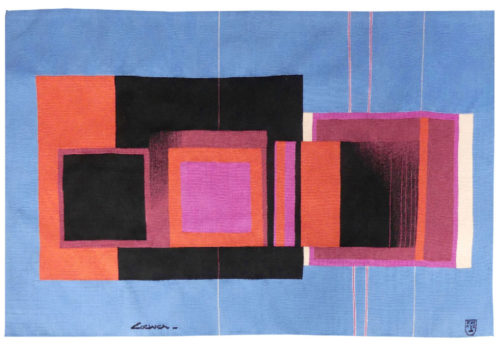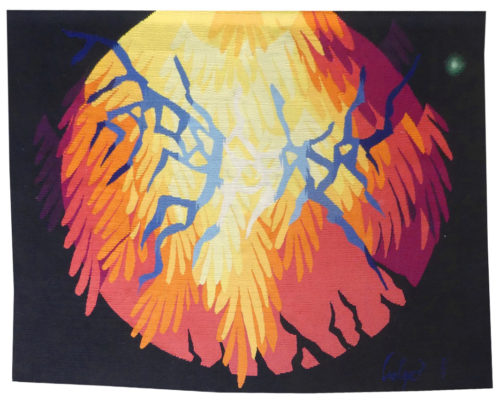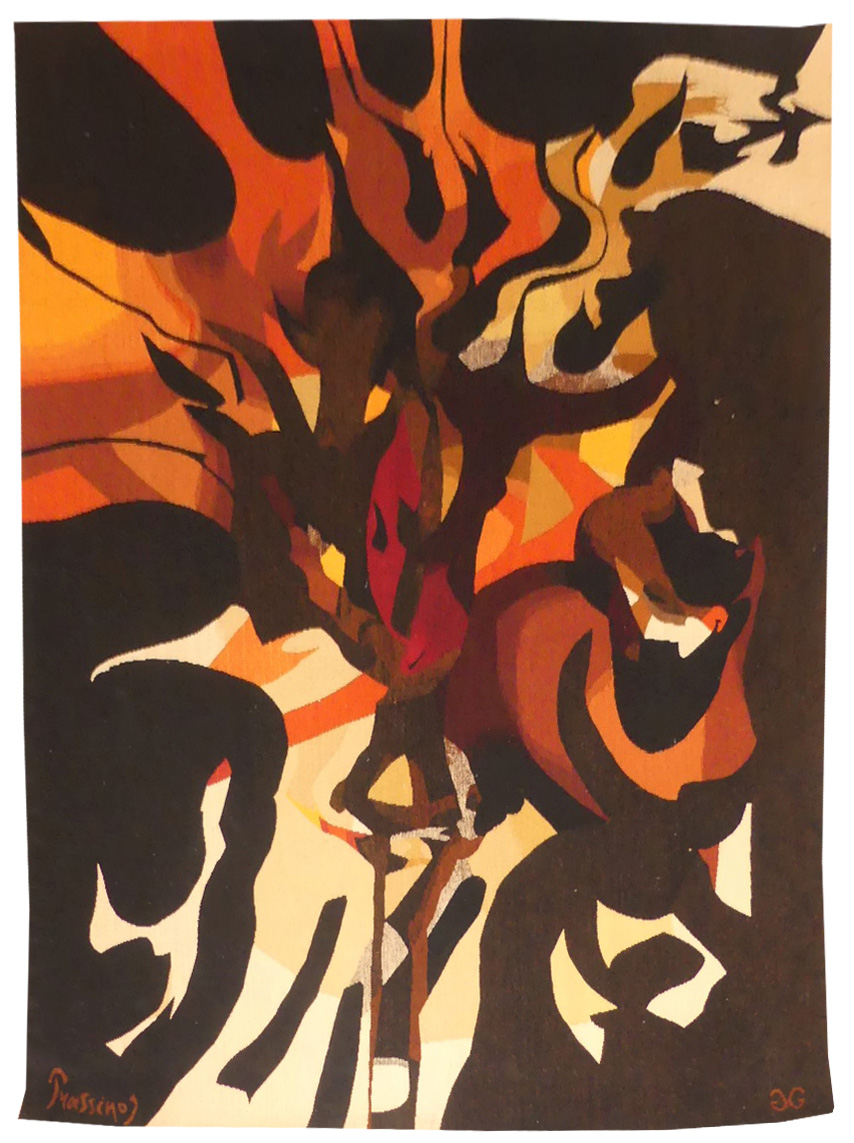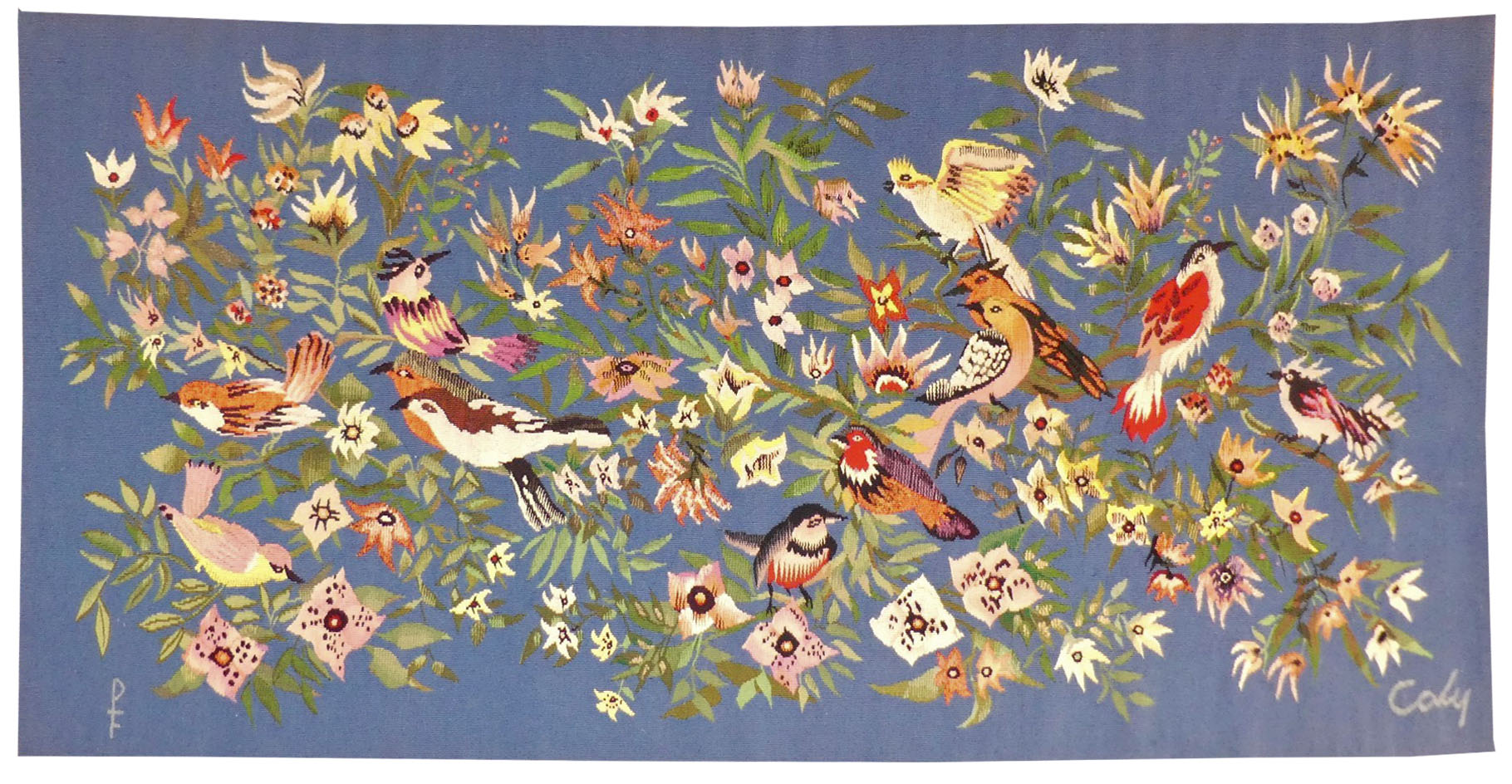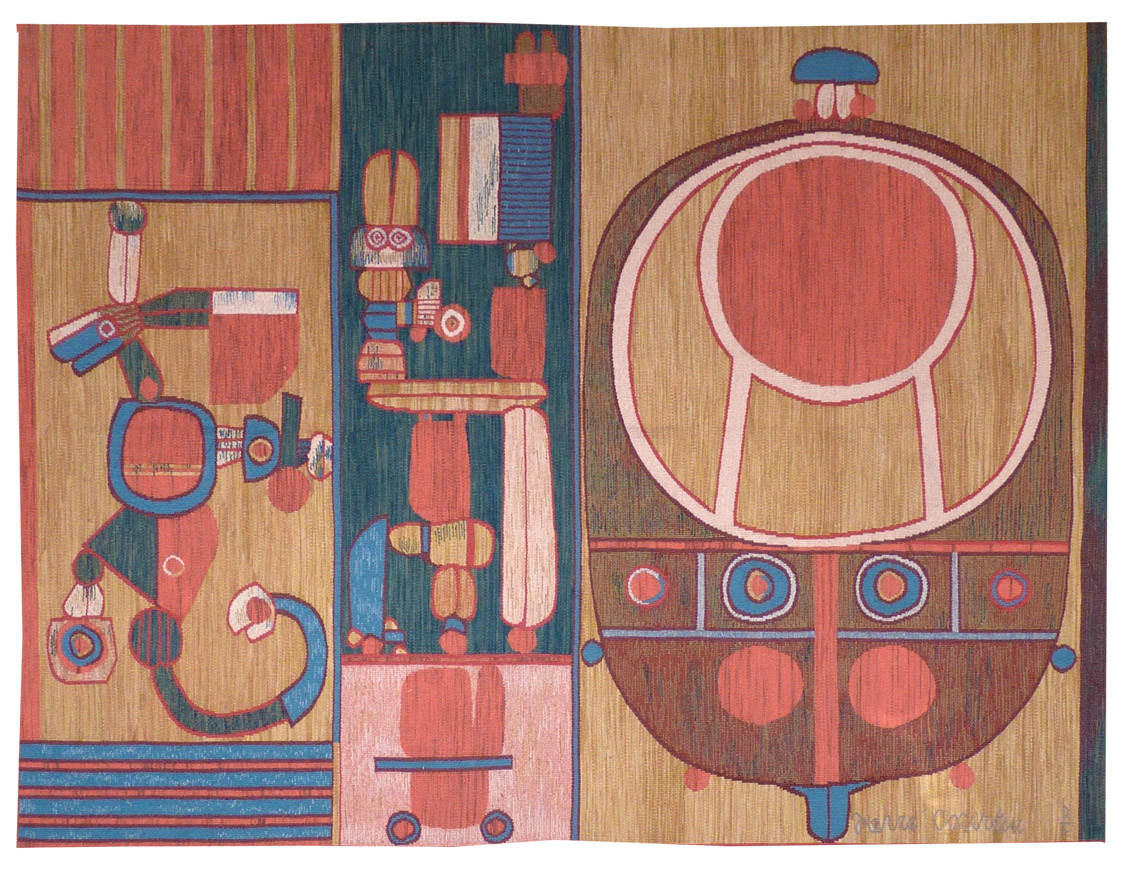-
Soleil pour Maria Pia (Sun for Maria Pia)
Aubusson tapestry woven by the Pinton workshop. With label, n°1/3. Circa 1970. Holger was a student at the Ecole Nationale d’Art Décoratif d’Aubusson and worked with Lurçat before the latter’s death in 1966. He designed numerous dream-like cartoons woven by the Aubusson workshop. Now settled in the United States, he remains a tireless advocate for, and witness to, modern tapestry design, organising exhibitions and lectures on the subject. -
Haute flamme (High flame)
Aubusson tapestry woven in the Goubely workshop. N°4/4. 1966. I became interested in the art of tapestry particularly because I was excited by the numbered cartoon technique consisting of the fabrication of a mental coloured image using a code…. Tapestry is an essential exercise. As I practised it, it is perhaps the desire to interrogate, down to the finest detail, a work which exists in two dimensions.” (quoted in the exhibition catalogue, Prassinos, rétrospective de l’oeuvre peint et dessiné, Puyricard, 1983). So much for the artist’s manifesto. Prassinos designed his first cartoons in 1951 (most of which, around 150, would be woven in the Goubely workshop); then he joined the A.P.C.T. (Association des Peintres-Cartonniers de Tapisserie). After several cartoons taking birds as their theme, Prassinos, like several other artists, despite being close to Lurçat, (Matégot, Wogensky…) turned resolutely towards abstraction, in a very personal style where sinuous shapes entwine in contrasting colours (often following a scheme of black-red-brown-beige). In a way there is in this cartoon a return to the figurative. However, more probably, the artist’s characteristic formal and chromatic conceptions are here allowed retrospectively to incarnate something which is generally, and paradoxically, impossible to represent and thus become conflagration, flame, wild fires (in Greece ? the Alpilles ?) Bibliography : Exhibition catalogue Mario Prassinos, tapisseries monumentales, Abbaye de Montmajour, Arles, 1974 Mario Prassinos, œuvre tissé, La Demeure, 1974, n°72 (Ill.) Exhibition catalogue Mario Prassinos, Tapisseries , Aubusson, Musée départemental de le Tapisserie, 1984 Exhibition catalogue Prassinos, Tapisseries, Angers, Musée Jean Lurçat et de la Tapisserie Contemporaine, 1988 -
Odette Caly, considered a specialist in floral arrangements, designed numerous cartoons for Aubusson, woven in the Pinton, Henry or Hamot workshops. The plant decor here is enlivened by birds, in a style that Henri Ilhe would not have denied. Bibliography : Caly, Publications filmées d’art et d’histoire, 1972Aubusson tapestry woven in the Pinton workshop. With signed label, n°1/6. Circa 1970.
-
La vérité cruelle d'un ancien jeu (the crual truth of an old game)
Aubusson tapestry woven in the Pinton workshop. With label. 1970. Best known as an engraver (and, be it said, one of the most important of the XXth century), Pierre Courtin designed several tapestry cartoons (of which one measuring 110m2 (!) is to be seen at the International Labour Organization in Geneva), some of which, like ours, are taken from his engravings.. In this piece, the particular and personal aesthetic of the artist is revealed in the original grouping together of geometrical forms, which can be seen as a little reminiscent of ancient civilisations (pre-columbian particularly). Strange also the choice of colour scheme of this artist, who distances himself from the strong colour contrasts characteristic of his colleagues. -
Bouquet d'artifice (Bouquet of "flowerworks")
Aubusson tapestry woven by the Pinton workshop. Avec son bolduc signé de l'artiste. Circa 1960.First a poster artist, then an artist-ethnographer during the war, Perrot began his career as a cartoon designer at its end, making almost 500 cartoons, most of which were woven at Aubusson, including numerous commissions from the state (with 33 cartoons, Perrot is the most prolific tapestry designer in the Mobilier National’s collection!). His style which is particularly rich and decorative is eminently recognisable : he illustrates in flat colours (with neither shading nor picking) an abundance of animals (most often birds), standing out with no perspective, against a background of vegetation, in a style reminiscent of the mediaeval mille-fleurs tapestries. Rather like a floral display of pyrotechnics, « Bouquet d’artifice » (Bouquet of “flowerworks”) presents an abundant spray of numerous varieties, some even slightly stylised, in a riot of colours accentuated by the black background : an ode to Nature. Bibliography : Tapisseries, dessins, peintures, gravures de René Perrot, Dessein et Tolra, 1982 Exhibition catalogue René Perrot, mon pauvre cœur est un hibou, Aubusson, Cité Internationale de la Tapisserie, 2023


